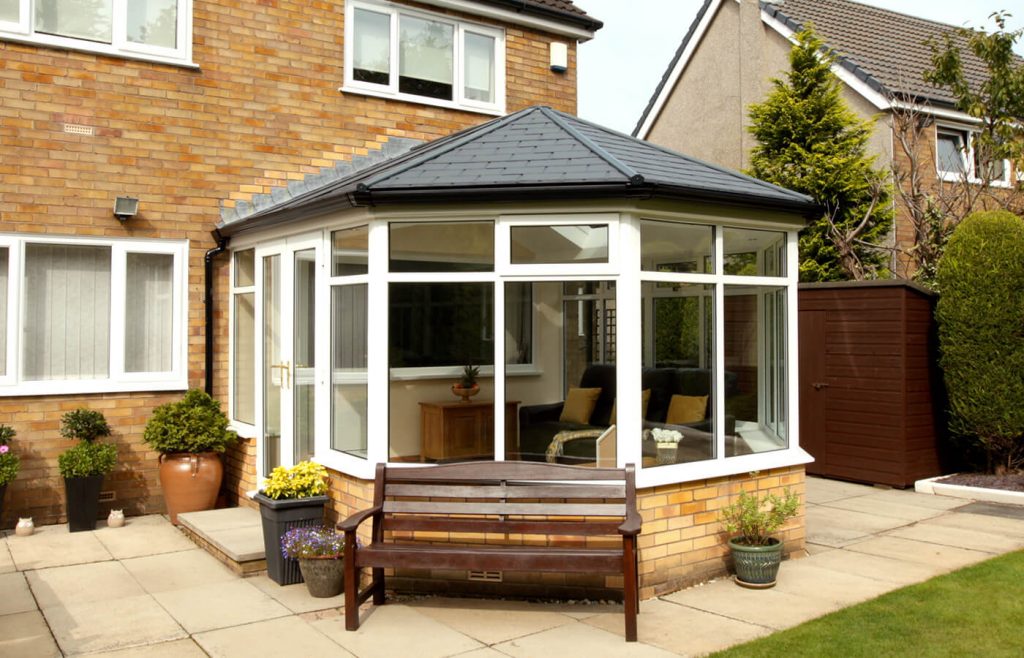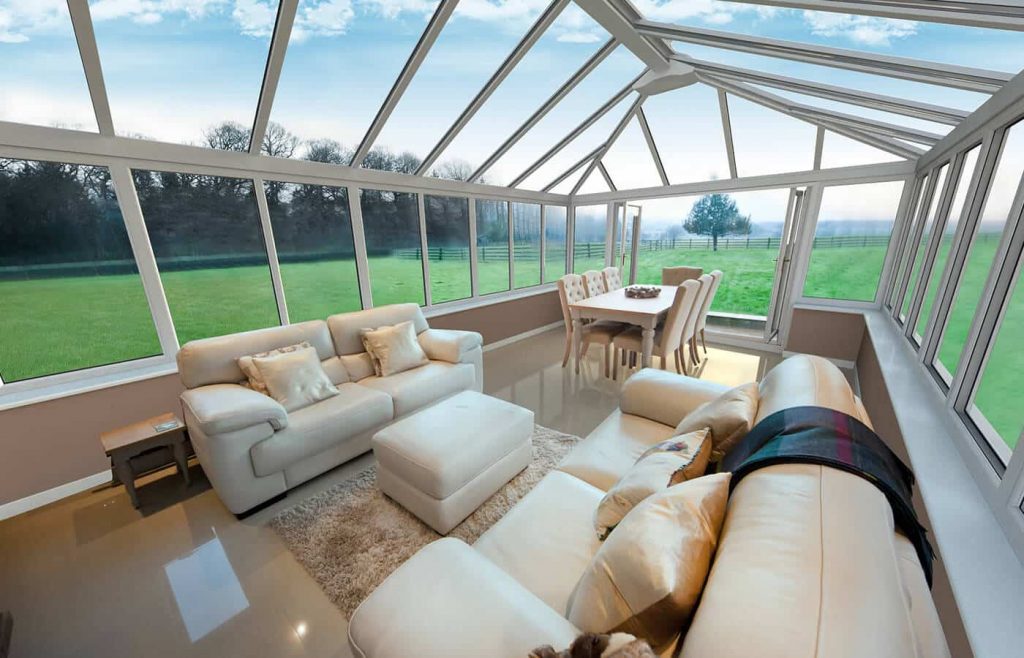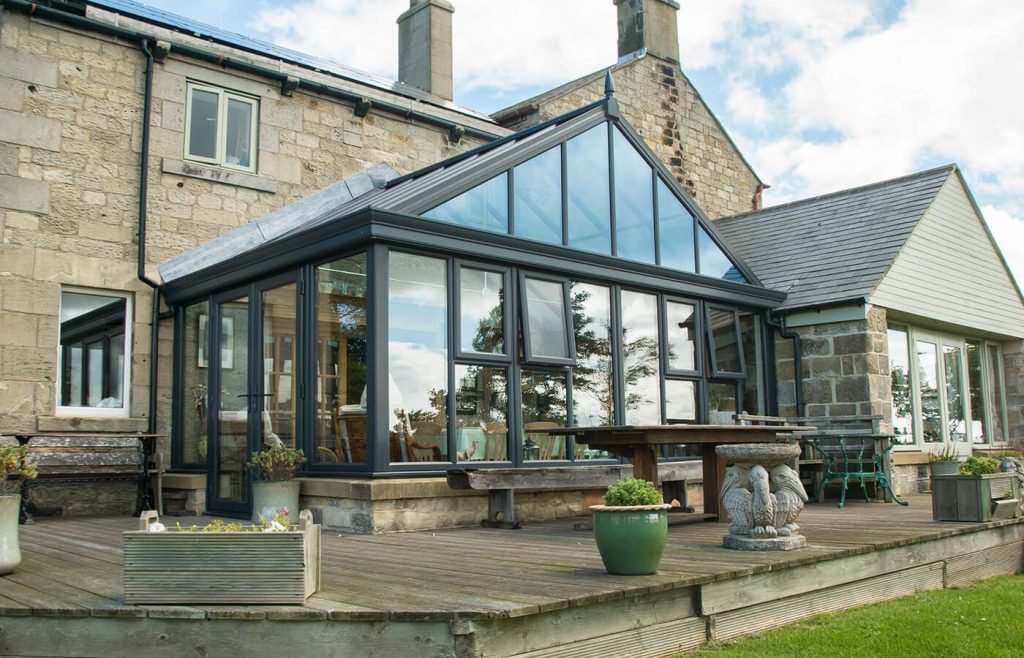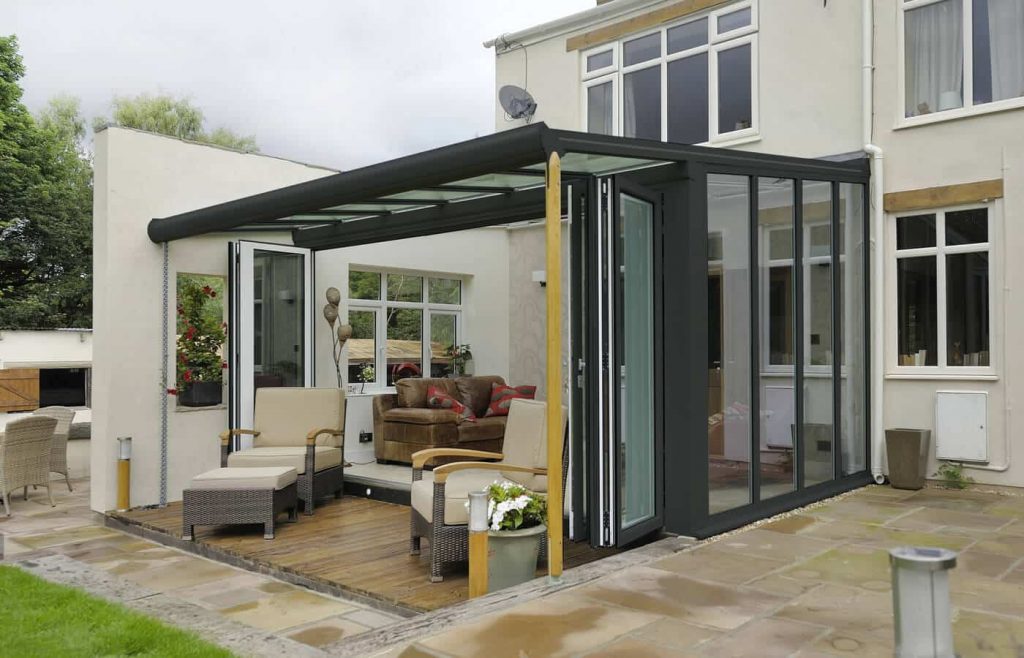Thinking about adding a conservatory to your home? With so many different conservatory styles available, it can be hard to know which one is right for you. The design you choose will affect everything from how much natural light there is to how much space you can use.
We’ve written this guide to walk you through the main conservatory styles and help you find the perfect match for your home.
What Are the Different Conservatory Styles?
The four main conservatory styles are Victorian (with a rounded bay front and ornate roof ridge), Edwardian (square or rectangular with a pitched roof), Gable (with a vertical front roof section), and Lean-to (a simple sloping roof perfect for bungalows or limited space).
Victorian Conservatory
Victorian conservatories remain one of the most popular styles in the UK, and it’s easy to see why. Their distinctive bay front and ornate roof ridge bring a traditional elegance to any home.
The Victorian style dates to the 19th century when conservatories became popular in Britain. Today’s versions keep the classic design but are built to be a comfortable living space.
The defining feature of a Victorian conservatory is its bay front, usually with three or five sections. The bay front also gives you excellent views of your garden and lets in plenty of natural light from different directions.
Another key feature is the ornate roof ridge with decorative details that add character. Victorian conservatories have a pitched roof that rises to a point, creating a sense of grandeur and space inside.
At Poole Joinery, our Victorian conservatories can be customised with different glazing options. We offer high-performance uPVC frames as standard, but aluminium is also available if you prefer a slimmer frame.
Victorian conservatories work well on most houses, but they’re especially good if you want a traditional look that complements an older property. They’re a popular choice for creating an extra living space for a dining room, home office, or relaxing garden room.

Edwardian Conservatory
The Edwardian conservatory offers a practical, no-nonsense approach to design that many homeowners appreciate. With its rectangular or square floor plan, this conservatory type makes excellent use of available space.
Unlike the Victorian style with its curved front, an Edwardian conservatory has straight walls and right angles. This simple layout means you can place furniture flush against the walls and use every inch of floor space efficiently. It’s particularly good if you plan to use your conservatory as a dining area or home office where you need to fit tables or desks.
The roof of an Edwardian conservatory is pitched on all sides, rising to a central ridge. This high ceiling creates a bright, airy feel and gives the room a sense of space. The clean lines of this classic design complement most house styles, making it a versatile choice.
Our Edwardian conservatories at Poole Joinery come with various roof options. The traditional glass roof maximises natural light, while a tiled roof offers better thermal efficiency and makes the space usable all year round. We can also install roof lanterns that combine the best of both worlds – solid sections for insulation with glass panels to let in light.
The Edwardian style works well on different types of houses and is especially good for larger properties where you want to create a substantial extra space. The Edwardian is an ideal choice if you’re looking for a conservatory that offers maximum usable floor space with a timeless design.

Gable Conservatory
The gable conservatory is one of the most striking conservatory designs available, with its distinctive front elevation that resembles the end of a house. Instead of sloping back like other conservatory styles, the front roof section rises vertically to a point.
This design feature gives the gable conservatory its standout appearance and creates a sense of height and space. The high ceiling allows for plenty of natural light and adds a feeling of grandeur to your home extension.
Like the Edwardian style, the gable conservatory has a rectangular floor plan that maximises usable space. The straight walls and right angles make arranging furniture and planning your room layout easy. But while the Edwardian has a roof that slopes on all sides, the gable keeps that vertical front section for extra impact.
At Poole Joinery, our gable conservatories can be customised with different glazing options and roof types. While the traditional glass roof showcases the distinctive gable end, we also offer tiled roof options for improved thermal efficiency. For those wanting the best of both worlds, a partial solid roof with glazed sections can provide insulation while maintaining the characteristic gable design.
The gable style makes a bold statement and tends to work best on larger properties or where there’s plenty of garden space. It’s particularly well-suited to period properties, complementing Georgian and Edwardian architectural styles. If you’re looking for a conservatory with impact that creates a spacious, light-filled room, the gable style could be perfect for you.

Lean-to Conservatory
The lean-to conservatory is the simplest of all conservatory styles. Sometimes called a Mediterranean conservatory, the lean-to features a single-sloped roof that “leans” against the house wall. This sloping roof gives the style its name and distinctive appearance. The roof can be set at different pitches depending on where it’s being installed – a steeper pitch for two-storey houses or a shallower angle for bungalows where height is limited.
The rectangular shape of a lean-to makes efficient use of space, with no wasted corners or awkward angles. This practical design is ideal for properties with limited garden space or where building regulations restrict what can be built. It’s also typically the most affordable conservatory type, making it popular with homeowners on a budget.
The lean-to style works particularly well on bungalows, terraced houses, or properties where space is tight. It’s a great solution if you want to add extra living space without overwhelming your home or garden. Despite its simplicity, a well-designed lean-to conservatory can transform how you use your home, creating a bright, versatile room that links your indoor and outdoor spaces.

Which Conservatory is For You?
Choosing the right conservatory often comes down to your specific needs and preferences. Here’s a simple guide to help you decide:
- If you value traditional charm and period features, a Victorian conservatory with its bay front and ornate roof ridge would be ideal for your home.
- If you prioritise practical space and want to maximise your usable floor area, an Edwardian conservatory with its square corners and efficient layout would suit you best.
- If you’re looking for dramatic impact and height, the Gable conservatory’s vertical front roof section creates a striking appearance and sense of space.
- If you have limited garden space, a tight budget, or own a bungalow, the versatile Lean-to conservatory offers a simple, cost-effective solution that works in most situations.
- If your home is a non-standard shape or you have unique requirements, remember that all these conservatory styles can be customised or combined to create a bespoke design that perfectly matches your vision.
Why Choose Poole Joinery for Your Conservatory
At Poole Joinery, we’ve been installing conservatories across Dorset for over 30 years. As a family-run business, we understand that adding a conservatory is a significant investment for your home, and we approach each project with care.
All our conservatories are built using high-quality Ultraframe components, ensuring excellent durability and performance. We offer a range of material options, including uPVC and aluminium frames, and a choice of different conservatory roof types to suit your needs.
Having completed several installations in the area, we understand the specific challenges presented by the various homes in Dorset.
Ready to Add Living Space?
Choosing the right conservatory style is about finding the perfect balance between your home’s architecture, your available space, and how you plan to use your new room.
Whether you opt for the traditional elegance of a Victorian design, an Edwardian’s practicality, the gable’s impact, or the versatility of a lean-to, a well-designed conservatory can transform your home.
The best way to decide which conservatory is right for you is to come and visit us. We’d love to welcome you to our showroom in Poole.
For more information, or to receive a free, no obligation quote, Call us on 01202 661299, email us at office@poolejoinery.com or use our online contact form.
Frequently Asked Questions
What’s the difference between a conservatory and an orangery?
A conservatory typically has a glass roof and walls that are mostly glazing. In contrast, an orangery has more solid elements, including a perimeter roof with a glass lantern in the centre. Orangeries tend to feel more like a solid extension than a conservatory.
Do I need planning permission for a conservatory?
Most conservatories in the UK are considered ‘permitted development’ and don’t need planning permission, provided they meet certain criteria regarding size and position. However, different rules may apply if you live in a listed building or conservation area.
What’s the most energy-efficient type of conservatory roof?
Solid tiled roofs offer the best thermal efficiency for conservatories, with some systems achieving U-values as low as 0.16 W/m2k. They help keep heat in during winter and prevent overheating in summer (often known as the greenhouse effect), making the space usable all year round.